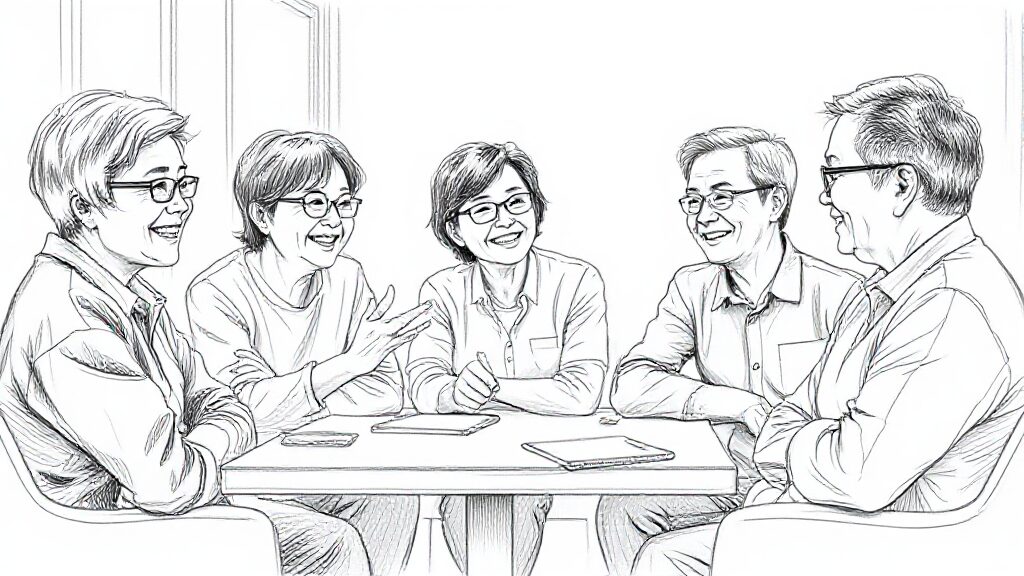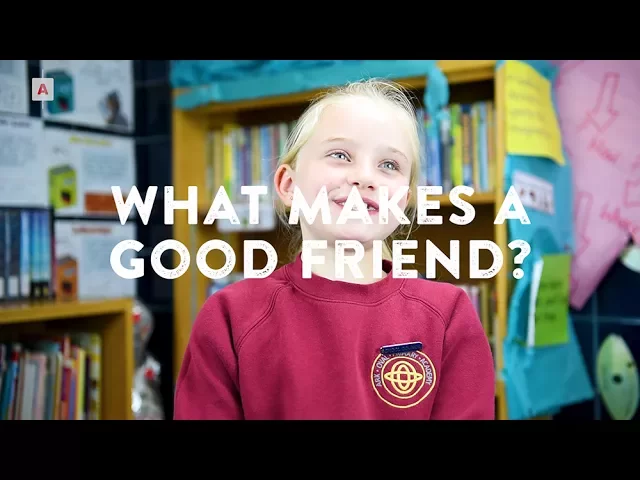2025-07-04 Polite & Kind: A Guide to Good Manners in Japan
Lesson Title: Polite & Kind: A Guide to Good Manners in Japan
Lesson Overview:
- Target Audience: CEFR B1 Japanese Adults (Middle-aged/Older), Mixed returning/new.
- Time: 90 minutes
- Topic: Explaining Japanese Manners & Customs
- Main Goal: To enable students to confidently explain and demonstrate understanding of Japanese etiquette in common social situations using appropriate B1-level vocabulary and discourse strategies.
Learning Objectives:
By the end of this lesson, students will be able to:
- Identify and explain 5 key etiquette tips for a chosen social situation.
- Use target vocabulary and phrases to give advice and explain cultural customs.
- Collaborate with a group to prepare and perform a short, simple role-play demonstrating a point of etiquette.
- Ask and answer follow-up questions about different social customs.
Target Language:
- Focus: Phrases for explaining customs and giving polite advice.
- Phrases/Vocabulary: (These are B1 level phrases that move beyond simple “should/shouldn’t”)
- It’s customary to… (e.g., “In Japan, it’s customary to take off your shoes when entering a home.”)
- to be considerate of… (e.g., “On the train, you should be considerate of other passengers and keep your voice down.”)
- common courtesy (e.g., “It’s just common courtesy to offer your seat to an elderly person.”)
- to be mindful of… (e.g., “Please be mindful of the volume of your music.”)
- public space (e.g., “A train station is a public space, so we should keep it clean.”)
Materials:
- Whiteboard & Markers
- Projector & Computer
- Obsidian Slides (see outline below)
- Handouts: “Good Manners: Choose Your Situation” (1 per group)
- Small pieces of paper & pens for Exit Tickets
Lesson Procedure:
1. Getting Started (Warm-up & Intro) (15 minutes):
- Purpose: To activate students’ prior knowledge and introduce the lesson’s theme in a positive way. To introduce the target language efficiently.
- Activity: A Kind Stranger (5 mins)
- In pairs, ask students to discuss: “Think of a time a stranger was very kind or polite to you. What happened? How did it make you feel?”
- After a few minutes, ask 1-2 students to share their story with the class.
- Activity: Introducing the Topic & Language (10 mins)
- Transition: “That’s a great example of politeness. Today, we are going to be experts and create a guide to good manners in Japan for visitors.”
- Use the Obsidian slides to introduce the 5 target vocabulary words/phrases. For each one, show the phrase, explain the meaning simply, and give a clear example sentence.
- Briefly explain the main task for the day: “In groups, you will choose one situation, create a ‘Top 5’ list of manners tips, and then prepare a very short role-play to show one of your tips.”
- CCQs:
- “Are you working alone or in groups today?” (In groups)
- “How many tips will you create in your group?” (Five)
- “Will your role-play be long or short?” (Short, about 1 minute)
- “What is the goal of the role-play?” (To show one of your tips)
2. Let’s Talk! (Main Activities) (60 minutes):
- Purpose: Provide extended, scaffolded practice for students to collaborate, use the target language, and share their expertise in a structured but communicative way.
- Activity 1: The Manners Experts’ Meeting (25 minutes)
- Divide students into groups of 3 (or 4, depending on attendance).
- Give each group the “Good Manners: Choose Your Situation” handout.
- Instruct them to choose ONE situation that their group finds interesting.
- Their task: Discuss and write down their “Top 5 Tips for Good Manners” for that situation. Encourage them to use the target vocabulary on the board/slide.
- Circulate and assist groups, offering language support and encouragement. Help them phrase their tips clearly.
- CCQs:
- “What’s the first thing you do in your group?” (Choose a situation)
- “What are you writing down?” (Top 5 tips for manners)
- “Should you try to use the new vocabulary?” (Yes)
- Activity 2: Role-Play Prep & Performance (35 minutes)
- Preparation (15 mins): Tell the groups: “Now, look at your list of 5 tips. Choose ONE tip. Prepare a very short, 1-minute role-play to demonstrate this tip. One person can be a visitor, and the others are Japanese locals. You can show the right way or the wrong way.”
- Performance (20 mins):
- Bring the class back together.
- Invite each group to the front one by one.
- First, they present their chosen situation and read their “Top 5 Tips” to the class.
- Then, they perform their 1-minute role-play.
- After each role-play, ask the audience: “Which tip was that role-play about?” This keeps the other students engaged.
- Applaud every group.
4. Wrapping Up (Review & Feedback) (15 minutes):
- Purpose: Consolidate learning, address questions, apply error correction, and gather feedback.
- Activities:
- Lesson Recap/Sharing Highlights (5 mins): Ask the whole class: “What was the most interesting or surprising tip you learned from another group today?”
- Error Correction Slot (5 mins): Use your delayed error correction method. Write 3-4 sentences on the board with common errors you heard, especially related to the target language (e.g., misuse of
considerateorcustomary). Ask students to correct them in pairs. - Final Q&A (2 mins): “Any questions about today’s topic or vocabulary?”
- Exit Ticket (3 mins): Distribute the paper slips for feedback.
Instructor Guidance & Notes:
- Error Correction Strategy: Focus on errors related to the target B1 phrases (
It's customary to,be considerate of, etc.) as this is new language. Note down misuse and address it in the final slot. - Cultural Sensitivity: This topic is perfect. Frame it as being helpful guides for visitors. The collaborative, non-confrontational nature is ideal.
- Flexibility: The timing is structured but can be adjusted. If groups are deeply engaged in creating their tips, give them a few extra minutes. The key is to protect time for the performance and wrap-up stages.
- Quality over Quantity: Emphasize that the role-plays should be very short and simple. The goal is clear communication of one idea, not a complex theatrical performance. This will prevent the “Desert Island” issue.
- Differentiation: Stronger students can be encouraged to explain the reason behind a custom. For students who need more support, encourage them to focus on writing clear, simple sentences for their tips before thinking about the role-play.
Obsidian Slides Outline:
## Polite & Kind
### A Guide to Good Manners in Japan
`A clean and simple photographic image for a presentation. Two middle-aged Japanese women are smiling and bowing slightly to each other in a bright, clean, modern setting like a shop entrance or a nice lobby. The image conveys respect and friendliness. Bright, minimalist background, out of focus. FLUX.1 style.`
---
# Warm-up
## A Kind Stranger
### In pairs, please discuss:
- Think of a time a stranger was very kind or polite to you.
- What happened?
- How did it make you feel?
---
# Key Vocabulary
---
# It's customary to...
---
## == **It's customary to...** ==
### This is a traditional or normal way of behaving.
#### Example: In Japan, it's customary to say "Itadakimasu" before eating.
---
# to be considerate of...
---
## == **to be considerate of...** ==
### To think about other people's feelings and needs.
#### Example: Please be considerate of your neighbors and don't make loud noise late at night.
---
# common courtesy
---
## == **common courtesy** ==
### The basic level of politeness that people are expected to show.
#### Example: Holding the door open for someone is common courtesy.
---
# to be mindful of...
---
## == **to be mindful of...** ==
### To be aware of something; to remember something important.
#### Example: When you are in a library, you should be mindful of the quiet atmosphere.
---
# public space
---
## == **public space** ==
### A place that is open and accessible to all people.
#### Example: Parks, train stations, and libraries are all public spaces.
---
# Today's Main Task
## The Manners Experts' Meeting
### In groups of 3-4:
1. **Choose ONE** situation from the handout.
2. **Create** a "Top 5 Tips" list for good manners in that situation.
3. **Prepare** a short (1-min) role-play for **ONE** of your tips.
---
# Let's Begin!
## Activity 1: Create Your "Top 5 Tips"
### (25 minutes)
---
# Activity 2: Role-Play Time!
## Preparation (15 mins)
## Performance (20 mins)
### When you perform:
1. Tell us your situation.
2. Read your "Top 5 Tips."
3. Perform your 1-minute role-play!
---
# Wrap-up & Q&A
---
# Exit Ticket
### Please take a moment to give your feedback. Thank you!






